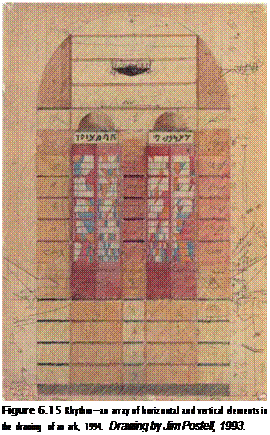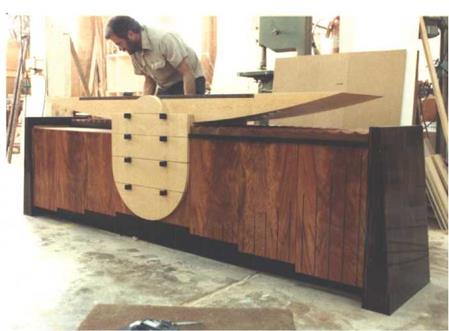Juxtaposition is the simultaneous experience of the relationships between contrasting elements or characteristics. Examples include a curvilinear form juxtaposed with an orthogonal shape and a light, reflective surface juxtaposed with a dark matte finish. In Michael and Rob Toombs’ Rivertime (1986), the light, figured, curvilinear maple top is juxtaposed with the dark, segmented lower portion of the cabinet (Figure 6.14).
Rhythm and Pattern
The word rhythm derives from the Greek term rhuth – mos, meaning "to flow."3 Rhythm is the foundation of music, dance, poetry, and design. Rhythm is the structure and order of elements in space or time. The fabrication drawing of
|
 an ark in Figure 6.15 expresses an array of horizontal and vertical elements, which create subsets of interrelated rhythm and variation. Rhythm is also the order of temporal daily experiences such as waking and sleeping, including monthly and seasonal patterns, and lifecycle events such as birth and death.
an ark in Figure 6.15 expresses an array of horizontal and vertical elements, which create subsets of interrelated rhythm and variation. Rhythm is also the order of temporal daily experiences such as waking and sleeping, including monthly and seasonal patterns, and lifecycle events such as birth and death.
Pattern is the arrangement of elements that determine a whole and are made from points, lines, and shapes. Rhythm and pattern are codependent and inherent aspects in design. They reveal the underlying structure of form through physical, spatial, or temporal compositional order.




